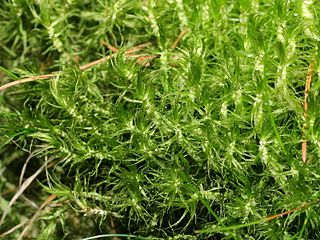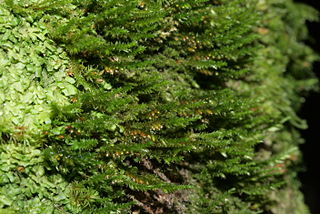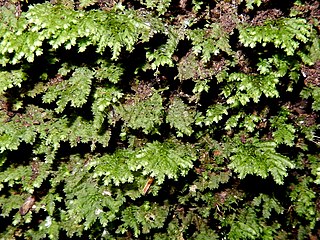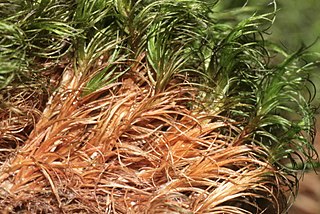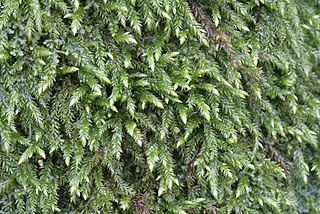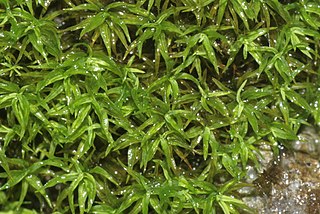| Rhizogonium | |
|---|---|
 | |
| Rhizogonium distichum | |
| Scientific classification | |
| Kingdom: | Plantae |
| Division: | Bryophyta |
| Class: | Bryopsida |
| Subclass: | Bryidae |
| Order: | Rhizogoniales |
| Family: | Rhizogoniaceae |
| Genus: | Rhizogonium Brid. |
Rhizogonium is a genus of mosses belonging to the family Rhizogoniaceae. [1]
The genus has an almost cosmopolitan distribution. [1]
Species: [2]
- Rhizogonium alpestre Müll.Hal.
- Rhizogonium bifarium (Hook.) Schimp.
- Rhizogonium distichum (Sw.) Brid.
- Rhizogonium dozyanum Sande Lac.
- Rhizogonium graeffeanum (Müll.Hal.) A.Jaeger
- Rhizogonium hattorii Nog.
- Rhizogonium hookeri (Müll.Hal.) Mitt.
- Rhizogonium lamii Reimers
- Rhizogonium latifolium Bosch & Sande Lac.
- Rhizogonium lindigii (Hampe) Mitt.
- Rhizogonium longiflorum (Mitt.) A.Jaeger
- Rhizogonium mauritianum Hampe ex Besch.
- Rhizogonium medium Besch.
- Rhizogonium menziesii (Hook.) A.Jaeger
- Rhizogonium microphyllum (Dozy & Molk.) A.Jaeger
- Rhizogonium mikawaense Takaki
- Rhizogonium mnioides (Hook.) Wilson
- Rhizogonium novae-hollandiae (Brid.) Brid.
- Rhizogonium paramattense (Müll.Hal.) Reichardt
- Rhizogonium pellucidum (Mitt.) A.Jaeger
- Rhizogonium pennatum Hook.f. & Wilson
- Rhizogonium piliferum (Hook.f. & Wilson) Hook.f. & Wilson
- Rhizogonium pungens Sull.
- Rhizogonium radiatum (Wilson) A.Jaeger
- Rhizogonium setosum (Mitt.) Mitt.
- Rhizogonium spiniforme (Hedw.) Bruch
- Rhizogonium spininervium (Hook.) Schimp.
- Rhizogonium subbasilare (Hook.) Schimp.
- Rhizogonium undulatum (Lindb.) A.Jaeger
- Rhizogonium vallis-gratiae (Hampe ex Müll.Hal.) Hampe
- Rhizogonium venustum (Mitt.) A.Jaeger

